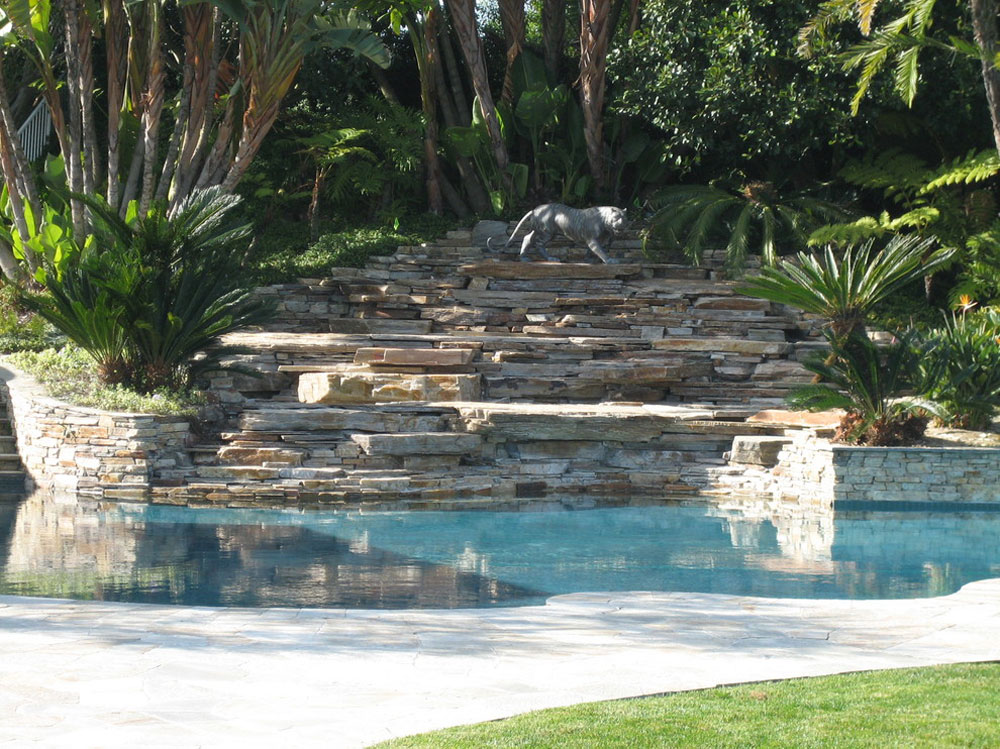Advertisement
A pleasant garden is a lot of hard work to achieve. You have to put in plants, planters, shade, seating, walkways, possible water features, and grass. Even with all this, it could still be missing something: garden statues.
A quick stop at a garden or home improvement store will reveal a wide range of garden statues. It’s clearly an element people want to add to their gardens and, as you look at them, may seem like the element you were missing.
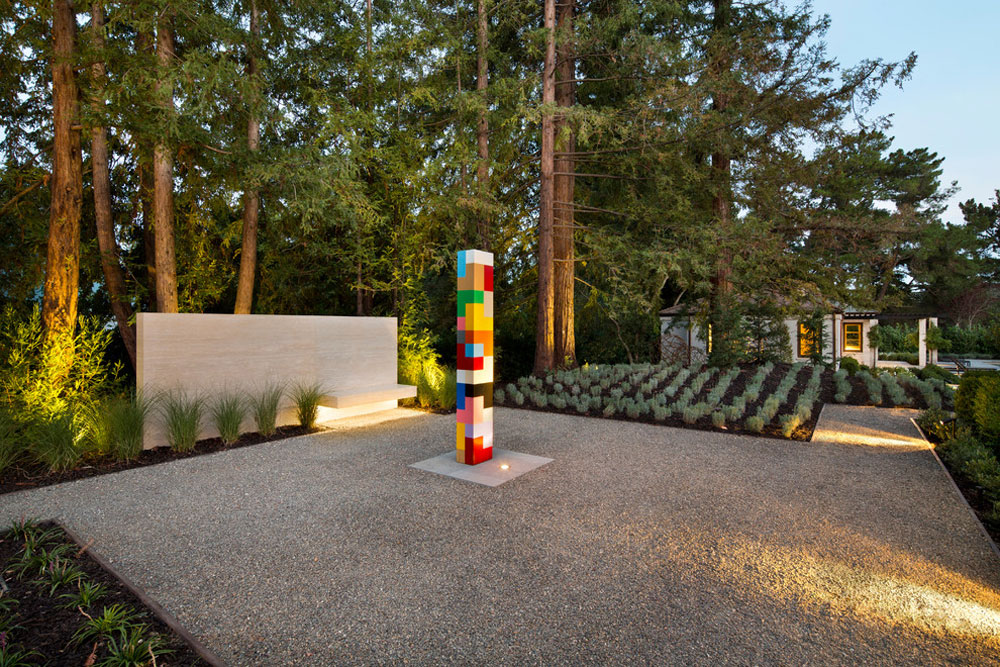 Image source: Laurie Ghielmetti
Image source: Laurie Ghielmetti
However, once you get it home, you might find that the garden statue is not actually that good a fit. Badly chosen landscape statues can make your yard look messy, crowded, and tacky.
Here are some tips and tricks for choosing out a garden statue that will help complete the look of your garden.
Choosing a Garden Statue
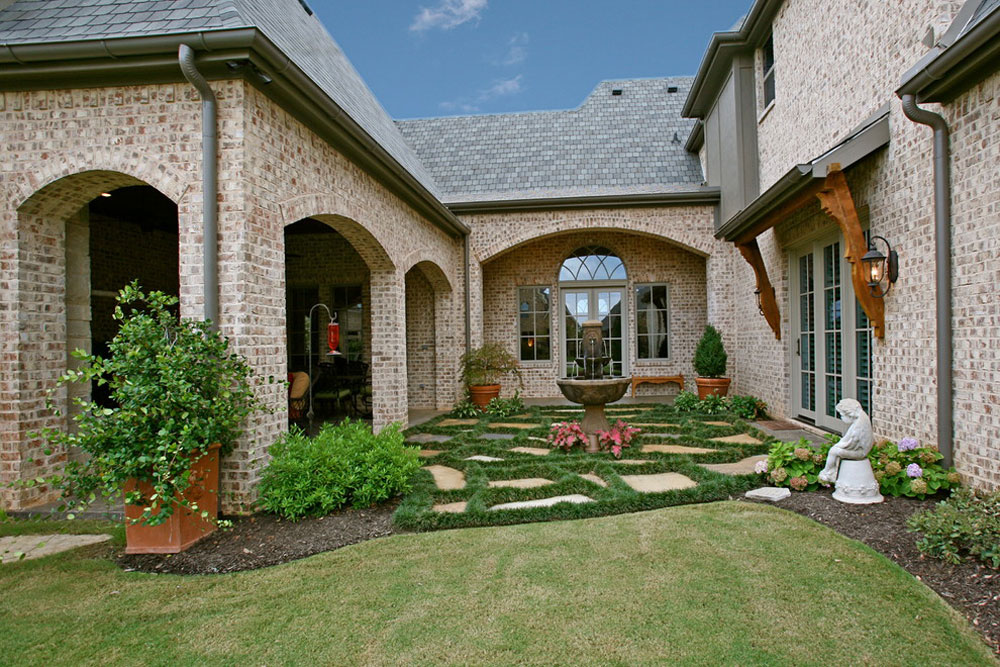 Image source: Atwood Custom Homes
Image source: Atwood Custom Homes
Plan your placement of garden statues like you plan out your garden furniture. You should think about the theme of your garden if it has one. Do you have a flower garden? Is there a lot of flat concrete for a more tamed look, or is it wilder?
The garden statues you choose should fit in with this theme. Avoid mixing your themes up. This will result in a messy, cluttered, awkward look instead of an eclectic one. A collection of garden gnomes paired with a serene Buddha statue will look strange rather than either fun or calm.
It’s important to make sure you really like the garden statue you choose. They aren’t a requirement for a nice garden. Don’t buy something because it’s trendy or buy it on impulse.
Garden Statue Placement
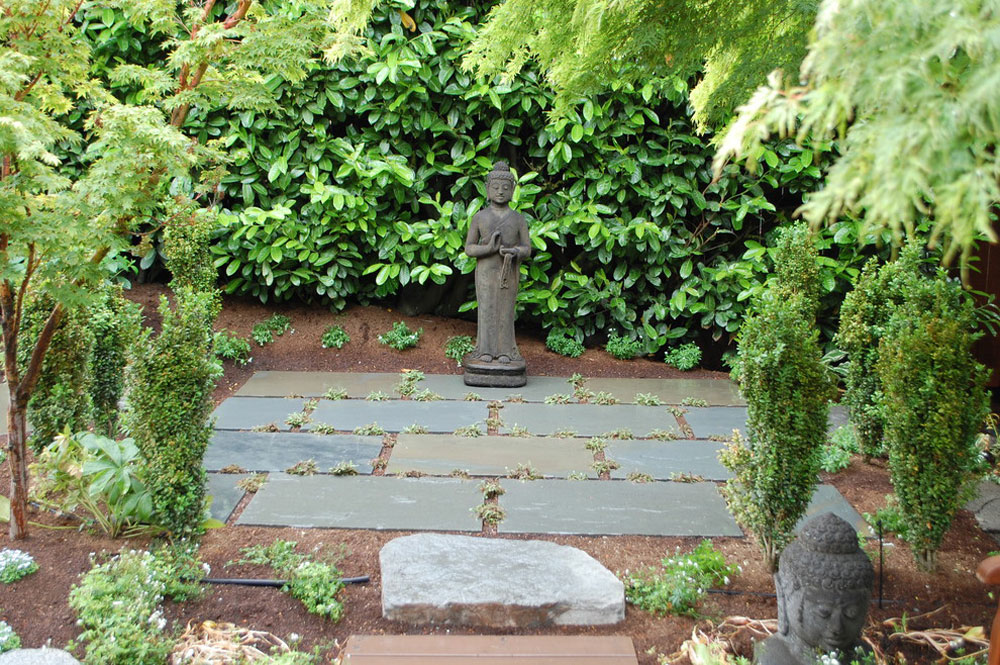 Image source: Avalon Northwest Landscape, LLC
Image source: Avalon Northwest Landscape, LLC
The placement of your garden sculpture will depend on a number of factors. The size of your garden may mean that the garden statue is a centerpiece regardless of its size. The type of garden statue makes a difference as well
Abstract sculptures are good focal points since they can look nice from all angles. Choose an abstract garden statue that evokes an emotional response and looks good from several angles.
Ask other people for their opinions before you buy an abstract garden statue, as abstract sculpture can be very subjective. Sometimes the abstract garden statue reminds them of something you’d rather not have sitting as a focal point in your garden.
Size makes a difference, too. Larger statues tend to become focal points no matter their placement unless you have a very large garden. Smaller statues make the garden more intimate.
You should place hem in a mass of flowers or other plants to create a fun encounter for anyone strolling through the garden. A collection of smaller garden statues also can work as focal points like larger garden statues do.
Small garden statues are nice additions to sitting areas. They help set the mood and provide something for the seating to congregate around. They can be used to balance out different sized seating, as well.
If you live in a climate that gets very cold, rendering your garden bare, a sculpture creates a point of interest in the winter garden. It usually becomes the focal point at this time of year so embrace it year round.
Avoid using too many garden statues. You’ll lose any effect if you over decorate your garden. If a garden statue is a piece you really love and fits well in your garden, you want to highlight it, not let it drown in the crowd of garden statues you have scattered around.
Garden Statue Size
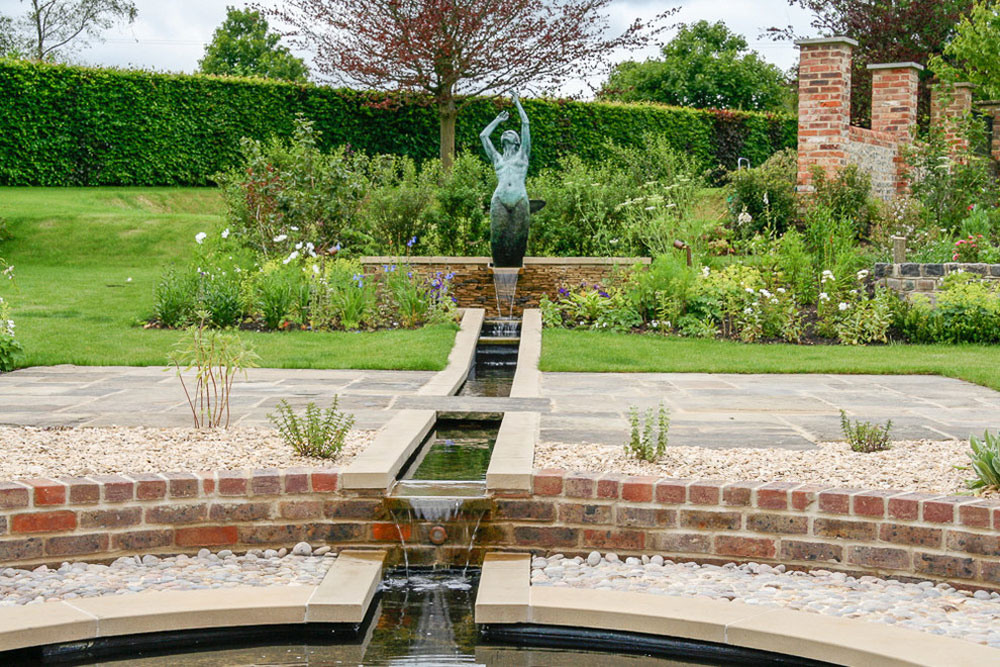 Image source: Janet Bligh Garden Designs
Image source: Janet Bligh Garden Designs
Garden size is going to be the primary factor in choosing the size of your gardens statue. Small gardens should not have large garden statues that take up most of the space. Choose small garden statues or medium-sized garden statues instead.
If your garden statue is going to be the focal point of the area, larger works better. For accent pieces, small garden statutes are a better pick. If you’re trying to figure out the right size.
Use a cardboard or wood box of the size you’re thinking of to get a sense of how the proportions will work out. Place the box in the area you’re thinking of using for your garden statue to see how a similarly sized object will look.
Garden Statue Materials
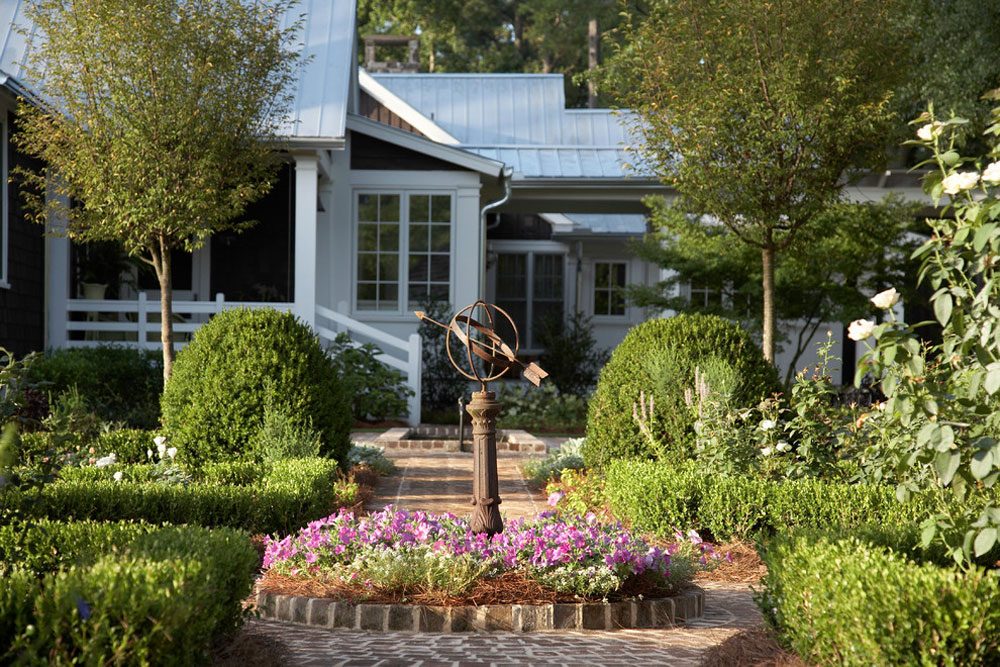 Image source: Historical Concepts
Image source: Historical Concepts
Garden statues come in a number of materials. Concrete garden statues are common, diverse, and relatively cheap. Limestone is also quite common.
There are also metal, fiberglass, and metal garden statues which offer more design flexibility. Metal garden statues are the most durable. Limestone and concrete garden statues weather over time. Cold weather can cause them to crack, as well.
Garden Statues as a Water Features
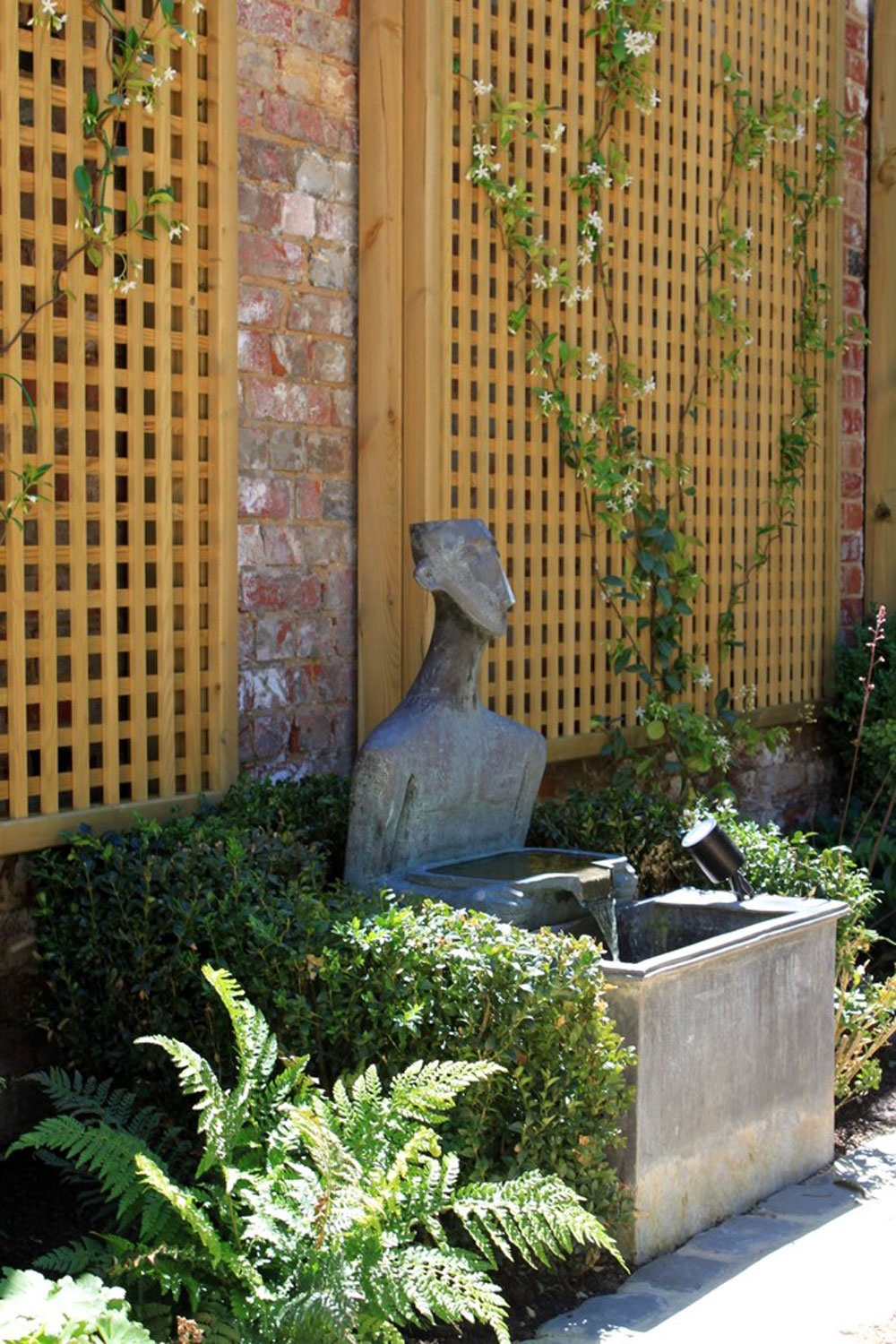 Image source: Peter Reader Landscapes
Image source: Peter Reader Landscapes
Statues and water features are a very old combination found in gardens great and small, old and new. Some statues are fountain spouts. Others will look nice sitting in the middle or edge of a pond or perched on an artificial waterfall. A nice bird bath may be just the thing to add some friendly feathered life to your garden.
Animal Feeder Garden Statue
Another interesting kind of garden statute is the animal feeder garden statue. These can be simple bowls or platforms, or they can be a part of a larger statue, like St. Francis holding a bowl full of birdseed. If you’re trying to attract birds, know that any bird feeder statue is more likely to attract squirrels who can easily climb up on it.
How to Situate Plants Around a Garden Statue
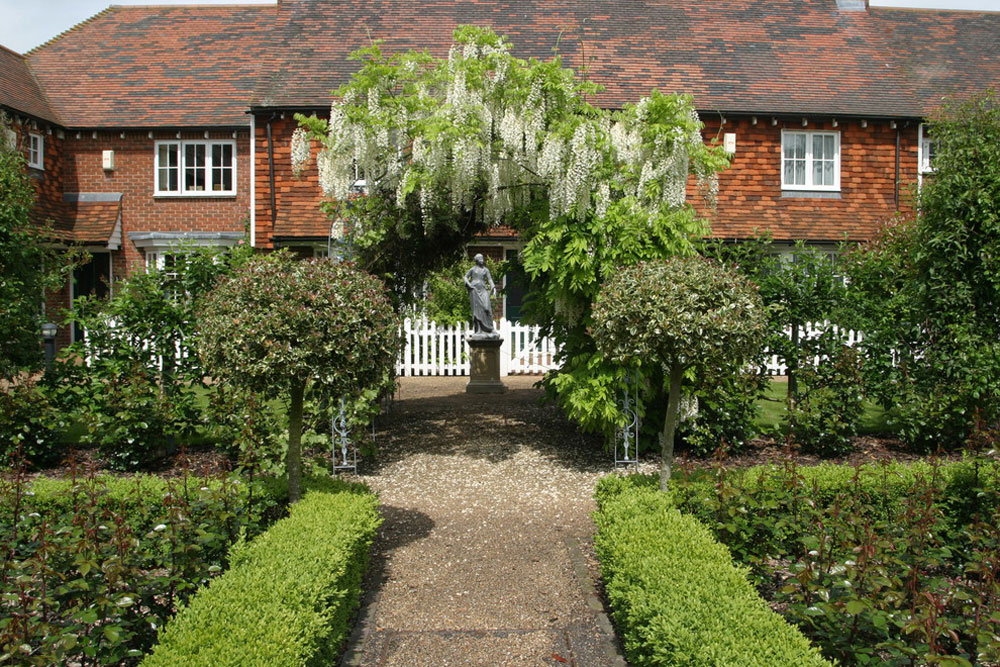 Image source: Environ Communities Ltd
Image source: Environ Communities Ltd
A great landscaping technique is massing plants around a garden statue. Plants serve as a backdrop tot eh garden statue. They can either complement it or contrasts with it. The plants should be smaller than the sculpture and shouldn’t block it.
When choosing them, you should think about how they’ll look through the seasons. Will they flower and when? Will they lose their leaves in the fall? These things will affect how they look in different views of the garden statue throughout the year.
Hedges and bushes will look good with most gardens statues. They have soft lines that will soften the hard edges, lines, and texture of the sculpture. The statue’s organic curves will stand out in great contrast to the geometric lines of the plants. You’ll need to trim them regularly.
Garden Statue Cost
 Image source: Trapolin-Peer Architects
Image source: Trapolin-Peer Architects
Large garden statues are more expensive than small garden statues. Mass-produced commercial statues are cheaper than pieces made by hand. You should also remember shipping costs (and difficulty) when deciding on a garden statue. Heavy or oddly shaped garden statues are going to be more expensive.
Make sure you get a delivery service that guarantees that they won’t damage or break the statue in transit. If you’re going to transport the garden statue yourself, make sure you have the right kind of vehicle, tie-downs, boxes, padding, or any other kind of equipment you need.
Ideas for Garden Statue Themes
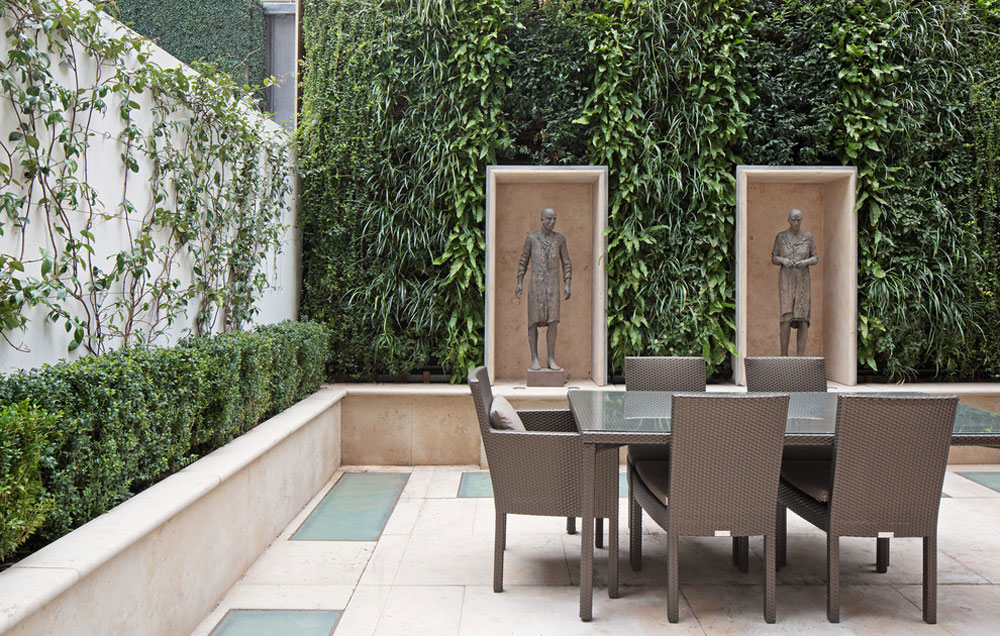 Image source: McQuin Partnership Interior Design
Image source: McQuin Partnership Interior Design
- For a garden with a Japanese theme, try keeping your garden statues simple. Lanterns look nice. For a more spiritual feel, you can include a statue of Buddha.
- For more contemporary gardens, an intriguing abstract sculpture is a good fit.
- In more traditional gardens, formal statures tend to work better, reinforcing the garden’s sense of class and comfort.
- For a playful look, consider quirkier sculptures like a cat-shaped bird feeder sculpture or unusual gnomes. If placed in the right area of the garden, these can be a fun find for visitors to your garden, a reward for exploring.
Restoring a Garden Statue
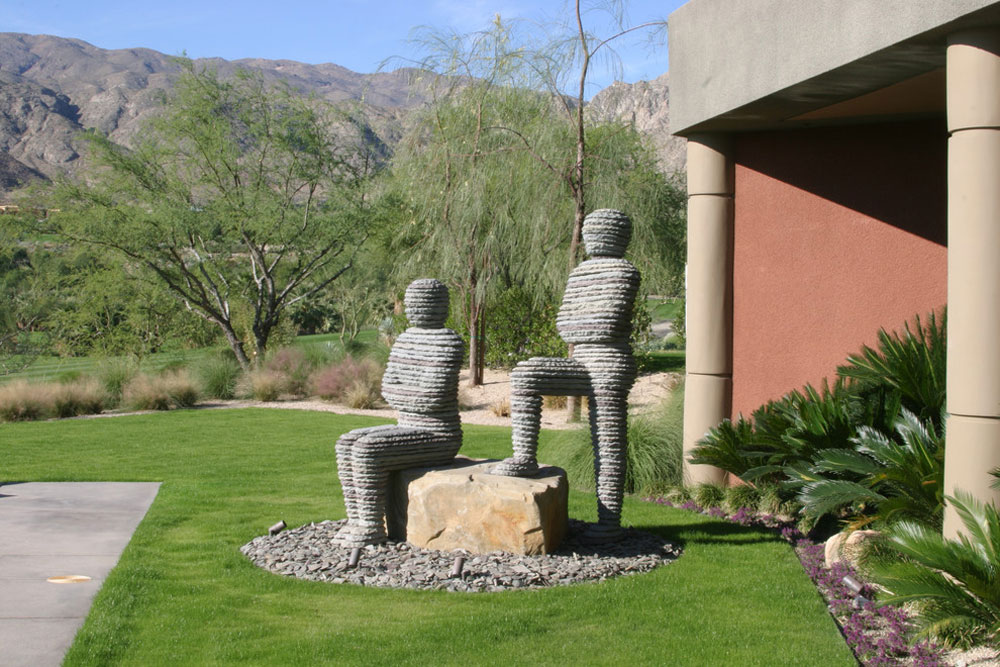 Image source: Randy Purnel Landscape Architect
Image source: Randy Purnel Landscape Architect
A new garden statue may not have the look you’re looking for. A trip to an antique store, yard sale, or flea market may yield up just the piece you need. These garden statues often have a weathered patina that can only be acquired from years of sitting outside.
They look great in traditional gardens and can even find a spot in a contemporary garden for an intriguing retro touch. You also know that they can handle the outdoors, something that’s not always clear with a factory-produced garden statue bought off the shelf.
Of course, they may not be in the best of shape. For valuable statues, you should definitely contact a reputable professional restorer to make sure that the restoration attempt doesn’t damage anything. If the concrete or stone garden statue is not a valuable antique, you can restore it to a nicer condition on your own.
Here are the basics. This guide will help you clean off garden statues as well as repair any that have been broken or cracked.
What You’ll Need
- Bristle brush
- Mild detergent
- Epoxy putty
- Epoxy adhesive (like as Araldite Precision)
- Narrow spatula or knife
- Craft knife
- Cloth
- Thin plastic gloves
Clean the Surface
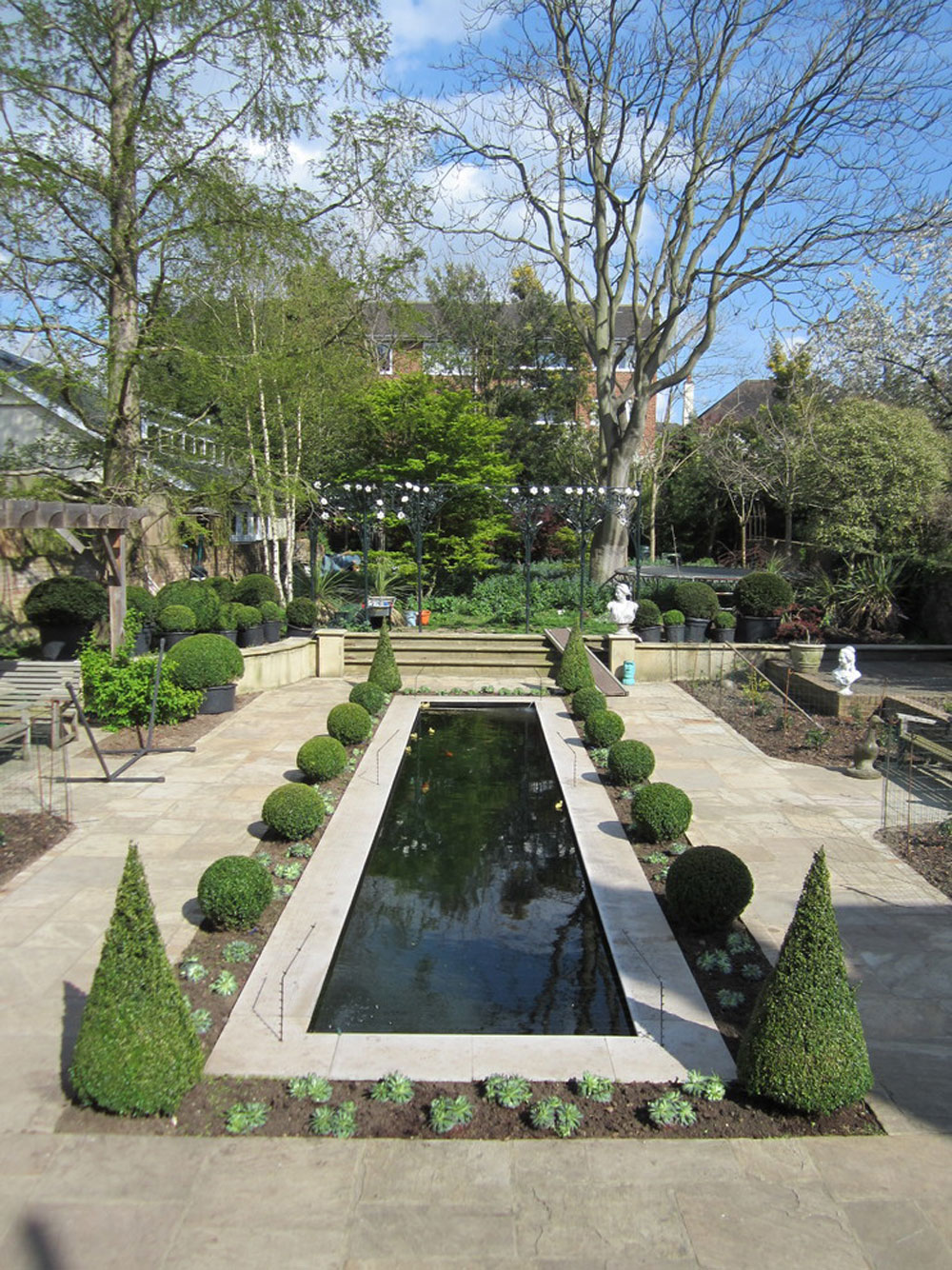 Image source: Architectural Plants Ltd
Image source: Architectural Plants Ltd
Brush away dirt, moss, and crumbling stone or concrete. Clean it with a mild detergent that has been diluted with warm water. This will help get rid of any ingrained grease and dirt. Rinse the residue away with clean water. Give the stone or concrete time to dry completely before you move onto any further steps if you need to.
Fill in Gaps
Fill any gaps with epoxy putty. You can find epoxy putty in craft stores and hardware stores. It comes in several colors. For concrete or stone, you’ll probably want silver grey.
Prepare the epoxy putty by rolling to pieces of it in your hands for about five minutes. The colors of it should merge. It should be a uniform color with no streaks. Mix it for a minute after its hit that point. It’s smart to wear thin plastic gloves made of rubber or polythene because the putty can irritate some people’s skin.
 Image source: Maison à Ville Mont-Royal, Qc
Image source: Maison à Ville Mont-Royal, Qc
Once the putty is ready, press it into the garden statue’s gaps using a knife or spatula. Wet your finger or a spatula, then use it to shape and smooth the putty in place. It will be soft at first, but it will harden after 3 or 4 hours.
Using a hairdryer to blow air onto the putty will help it set in a few minutes. This is a good idea if you have to build up your repairs. Clean tools as soon as possible so that the putty will not harden on them.
If you’re interrupted while working with the putty, put it into the freezer. It will keep for 36 hours. You’ll need to warm it with your hands for it to be soft enough to work with again.
Creating Missing Parts
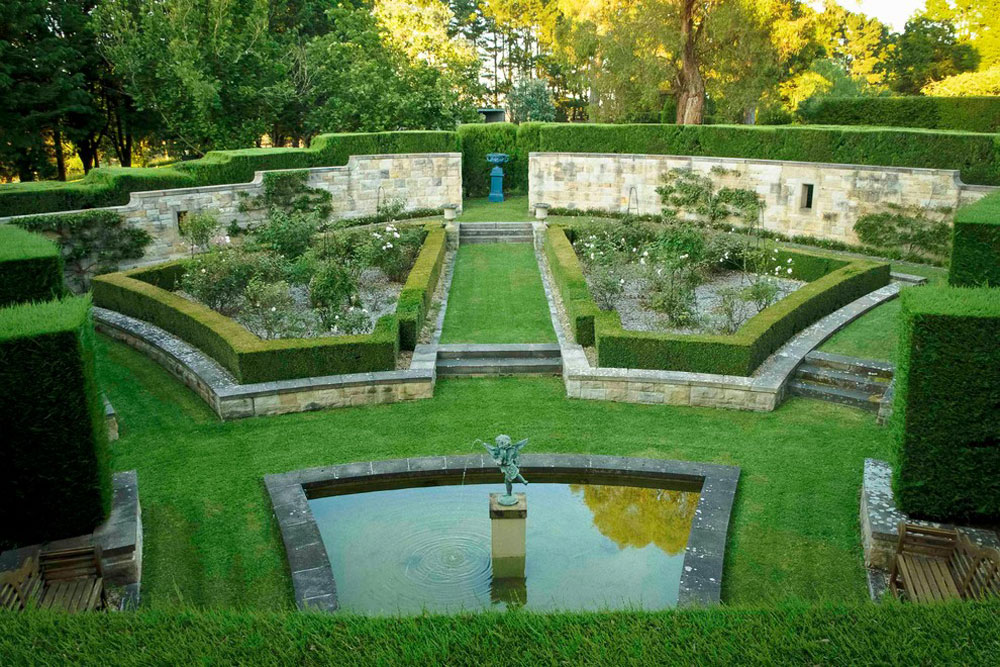 Image source: Nicholas Bray Landscapes
Image source: Nicholas Bray Landscapes
Use the putty to crease missing or damaged parts, like toes or other small parts. Be careful with this, as sometimes your ad hoc artistic attempts can mar the overall look of the garden statue. Make sure you only try to do this with small and out-of-the-way elements of the statue.
Fixing Hairline Cracks
You need to repair hairline cracks before water can get into them. In colder weather, this water will freeze and expand, widening the crack. Use an epoxy adhesive that is recommended for use on stone (Araldite Precision is a good option). Make sure it’s mixed well before you apply it.
While wearing thin plastic gloves, apply the adhesive into the crack with a circular motion. A cocktails tick can help you make sure it gets into the right spot.
Make sure you wipe away any excess with a cloth that’s been dampened with a white spirit. The excess dried adhesive will look bad. Make sure you don’t wipe the adhesive away from the areas where you want it to be applied.
Encourage an Antique Look
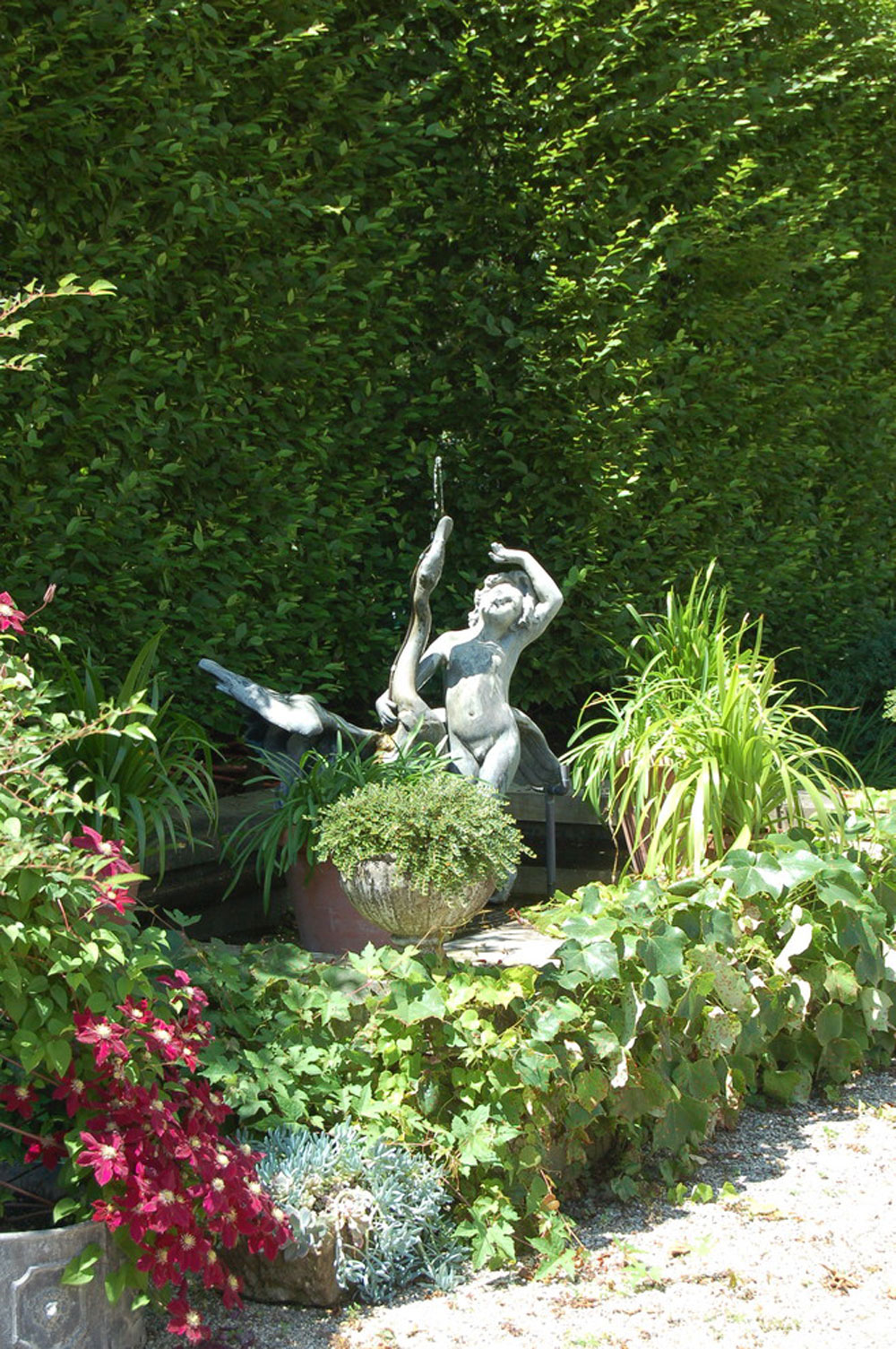 Image source: Paul Maue Associates Landscape Architects
Image source: Paul Maue Associates Landscape Architects
As much car as you put into applying adhesive, it won’t look great. You can remove excess that’s dried using a sharp blade.
Encourage the growth of moss and lichen to make sure the area you’ve repaired blends in with the rest of the garden statue. There are a number of ways to do this, including rubbing the garden statue with compost or manure, painting it with milk, or coating it occasionally with plain natural yogurt.
Ending thoughts on using garden statues
A garden statue can be an excellent addition to your garden. It can create the perfect focal point or accent the elements you already have in place. Try using some of these techniques to find the perfect one.

